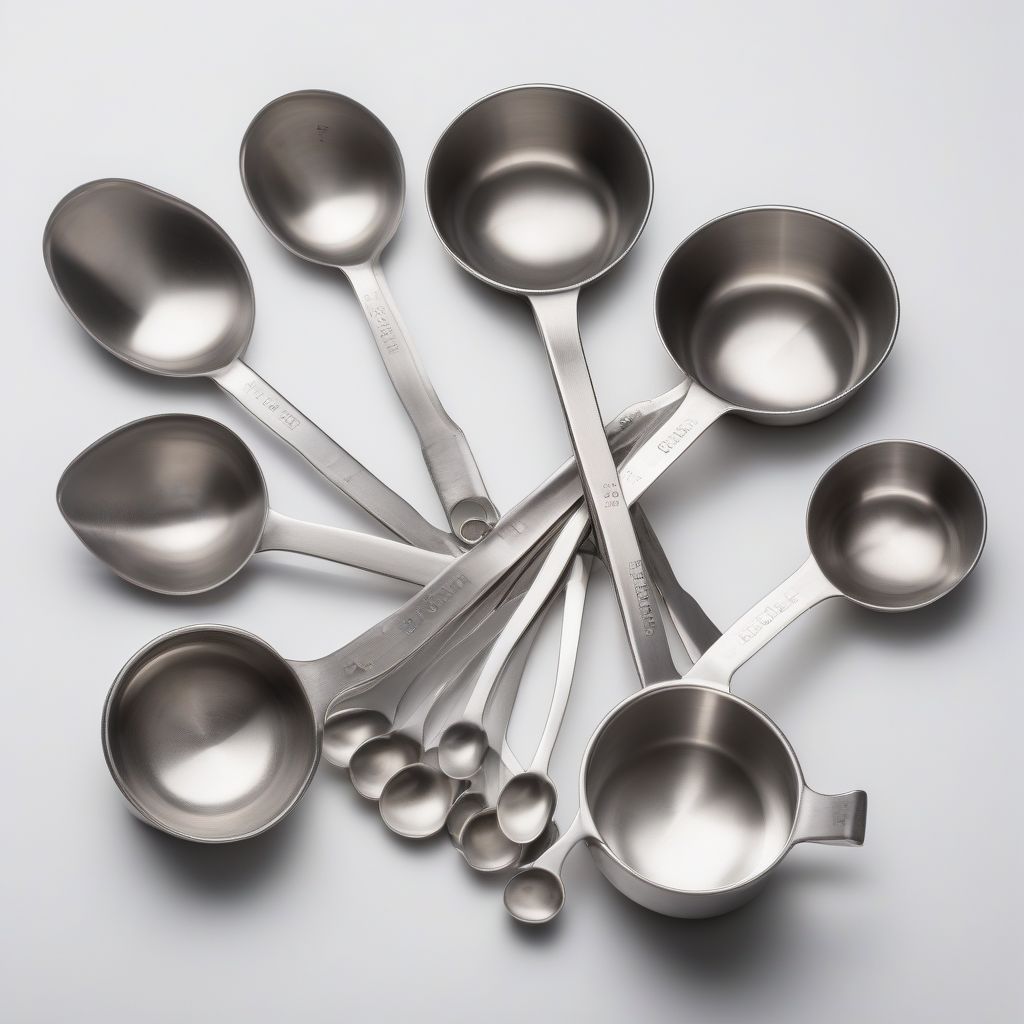Have you ever dreamt of pulling a perfectly golden, delicious-smelling cake out of the oven, only to find it sinks in the middle or ends up tough and chewy? The secret to baking success lies in the precision of ingredient measurements. As a nutritionist and meal prepping coach, I can tell you that baking is a science that demands accuracy. Let’s break down how to measure ingredients accurately for baking so your treats always turn out right.
Understanding the Importance of Accurate Measurements in Baking
Baking is a delicate dance of ratios and chemical reactions. Unlike cooking, where you can often adjust seasoning as you go, baking requires exact measurements to ensure the final product turns out as intended. Too much flour can make your cake dry; too little liquid can leave it dense and undercooked.
Essential Tools for Accurate Baking Measurements
Having the right tools can make all the difference in achieving accurate measurements:
1. Measuring Cups and Spoons: The Cornerstones of Baking
- Dry Measuring Cups: These usually come in sets (1 cup, ½ cup, ⅓ cup, ¼ cup) and are designed for scooping and leveling dry ingredients like flour and sugar.
- Liquid Measuring Cups: These have a pouring spout and markings to measure liquids like water, milk, and oil accurately.
- Measuring Spoons: Essential for both dry and liquid ingredients, they come in standard sizes (1 tablespoon, 1 teaspoon, ½ teaspoon, ¼ teaspoon).
 Measuring Cups and Spoons Set
Measuring Cups and Spoons Set
2. Kitchen Scale: Your Precision Partner
For the most accurate measurements, especially when working with recipes that provide ingredient weights (like many from professional bakers), a kitchen scale is invaluable. They allow you to measure ingredients in grams or ounces, ensuring consistency every time.
3. Other Handy Tools
- Mixing Bowls: Choose bowls with a good size for your recipe to prevent spills and ensure proper ingredient incorporation.
- Rubber Spatula: Perfect for scraping the sides of bowls and measuring cups to ensure you use every bit of your ingredients.
Mastering the Art of Measuring Dry Ingredients
Dry ingredients should maintain their structure when measured. Here’s how to do it right:
-
Fluff it Up: Use a fork or spoon to lightly fluff up ingredients like flour and sugar in their containers before scooping. This prevents them from being compacted, which can lead to using too much.
-
Spoon and Level: Use your measuring cup to scoop the ingredient directly from its container. Don’t pack it in. Once you have a heaping cup, use the straight edge of a knife or a bench scraper to level off the excess back into the container.
Measuring Liquid Ingredients: Finding Your Flow
Accuracy is key when measuring liquids:
-
Use a Liquid Measuring Cup: Place the cup on a flat surface. Pour the liquid carefully to the desired measurement line, checking at eye level to ensure accuracy.
-
Don’t Lift: Avoid lifting the liquid measuring cup while pouring. This can distort the measurement.
Handling Sticky Ingredients: A Sweet Challenge
Sticky ingredients like honey, molasses, or corn syrup can be tricky:
-
Grease It Up: Lightly grease your measuring cup or spoon with cooking spray or oil. This will allow the sticky ingredient to slide out easily.
-
Heat It Up (Optional): For extra stubborn ingredients, briefly warm them in the microwave for 5-10 seconds. This will make them more pourable and easier to measure.
Common Baking Measurement Mistakes (and How to Avoid Them)
-
Packing Dry Ingredients: Packing flour or sugar into a measuring cup will give you too much, resulting in a dry or dense baked good. Always spoon and level.
-
Not Using a Level Surface: An uneven surface can lead to inaccurate measurements, especially for liquids.
-
Substituting Measuring Tools: Using a dry measuring cup for liquids or vice versa will give you incorrect amounts.
-
Ignoring Recipe Instructions: Always follow the recipe’s specified measuring techniques.
The Importance of Consistency in Baking
Consistency is key to reproducible baking results. Once you find a measuring method that works for you, stick with it! This helps you become familiar with how your ingredients behave and how they affect your final product.
Going the Extra Mile: Weighing Ingredients for Precision
For the ultimate in accuracy, consider using a kitchen scale to weigh your ingredients. This is especially beneficial for recipes with small ingredient amounts, where even a slight mismeasurement can significantly impact the outcome.
The Joy of Accurate Baking
Mastering the art of accurate ingredient measurement is a fundamental skill for any baker. It empowers you to create delicious, consistent results and build confidence in the kitchen. Remember, practice makes perfect, and don’t be afraid to experiment!
[amazon bestseller=”digital kitchen scale”]
Ready to Elevate Your Baking?
Want to learn more about achieving the perfect texture in your cakes and pastries? Check out our article on “How to Achieve the Perfect Texture in Cakes and Pastries.”
